
The Big Ten didn’t necessarily save the best for last in its final spring as a league with 13 baseball teams.
While the conference’s football status continues to rise on the tide of billion-dollar television contracts, its baseball identity still resides somewhere in the middle class. It sits seventh in RPI ranking — a typical spot in the last decade — with peers like the Sun Belt, Missouri Valley and AAC.
Fair or not, the big-picture fate of the cold-weather league plays out in nonconference play before the calendar flips to April. And while Big Ten teams generally schedule tougher now than they did when Nebraska joined in 2012, capitalizing on those early moments has proven elusive — the average number of Big Ten postseason teams in those dozen years is three.
This edition of the league is trending toward more of the same. Schools have played 55 Quad 1 games — that is, contests against teams with top-50 RPIs — through Tuesday and won 12 of them. That’s a .218 percentage and sets conference schools up for precious few opportunities at needle-moving weekend statements in league action.
People are also reading…
How different might things look a year from now with four new West Coast additions? Now is a good time to peek at Oregon, Washington, UCLA and USC who have completed most of their nonconference slates that don’t figure to change drastically in future seasons as they shift from the Pac-12 to Big Ten.
The short answer: The infusion of brand names may not be as immediately transformative as once assumed. Oregon’s RPI of 56 would rank fourth in the new Big Ten. Washington (95), UCLA (145) and USC (162) are already close to being out of the at-large conversation. All have missed chances within top-100 nonconference strengths of schedule.
Final RPIs of 45 or better are typically enough to be selected for the NCAA tournament. Nebraska, Maryland and Rutgers are in that range now. Five more teams — Northwestern, Iowa, Ohio State, Illinois and Indiana — sit in the top 100. The Hawkeyes and Hoosiers were regional teams a season ago off to slower starts than expected. The traditionally competitive Huskers and Terps were wildcards after replacing large swaths of their rosters.
Two other teams are in unfamiliar spots. Northwestern — with a new head coach for a third straight spring and no sustained history of baseball relevance has already matched last season’s win total and will play meaningful games in April. Michigan has been a regional regular for a decade but already its only path back may be winning the league tournament.
Let’s reset the Big Ten rankings with conference play — 24 (scheduled) games between each school — beginning broadly Friday leading up to the league tourney in Omaha from May 21-26:
1. Nebraska (17-6)
The Huskers scheduled tough and reaped the RPI rewards. This looks like an old-school Big Red offense that grinds at-bats, pressures defenses and passes the baton. But the real story is a deep and remade pitching staff, with Brett Sears an emerging ace. Get to 43-ish wins and hosting an NCAA regional is in play.
2. Rutgers (18-7)
The slate hasn’t been too challenging but the Scarlet Knights keep winning games including a series victory at UConn last weekend. Josh Kuroda-Grauer (.435 average) has swung one of the nation’s hottest bats and the RU defense is the soundest in the league. Rutgers could have its best Big Ten club if preseason ace Christian Coppola (6.41 ERA) gets going.
3. Maryland (19-6)
Credit new head coach Matt Swope for leading a relatively smooth transition even as the Terps lost the guts of their past Big Ten championship teams in the offseason. This new-look group is winning with pitching — not slugfests — and already has nine wins against top-100 RPI teams. There’s power in a winning culture.
4. Iowa (11-10)
Where’s the pitching? The popular preseason league favorite hasn’t had much beyond starters Brody Brecht and Cade Obermueller after leaning on their depth of arms the previous two springs. The offense has been a plus and the Hawkeyes may yet solve their mound troubles in Big Ten play but a sluggish first month has dug a deep RPI hole.
5. Illinois (11-12)
The Illini took big nonconference swings — and went 0 for 7 against top-50 RPI opponents including being swept at Tennessee. Their offense has a similar all-or-nothing makeup, leading the league in home runs despite only one batter hitting above .300. Starting pitchers Cooper Omans and Jake Swartz have been good. The bullpen, collectively, has not.
6. Indiana (13-12)
This is what a low-floor, high-ceiling team looks like. The Hoosiers own wins over top-20 Coastal Carolina and Dallas Baptist and swept Baylor. They’ve also been run-ruled by Illinois State and lost a home series to Troy. Outfielder Devin Taylor (.368 average, four homers) is a star in a dynamic lineup. TBD whether pitching (7.33 ERA) can shed its liability status.
7. Ohio State (10-11)
Sophomore righty Landon Beidelschies (3.51 ERA, 43 strikeouts in 33 1/3 innings) is breaking out and top-end pitching depth has been decent enough in notable wins over California and Oklahoma. A limp but speedy offense — propped up statistically by a 26-run day against West Virginia — relies on small ball to score consistently.
8. Purdue (16-10)
A standard first month for the Boilermakers, who tend to load up on cupcakes before the sugar rush wears off in league play. Purdue’s wins are mostly nondescript, though it has also managed to mostly avoid pothole losses. The question is whether the top-50 scoring offense and top-60 pitching ERA have statistical staying power in April and May. Recent history says not to bet on it.
9. Michigan State (10-12)
A 1-5 start including losses to Lehigh and Marshall wasn’t what the Spartans needed to believe this year could be different. A random midweek run-rule win at Georgia is an outlier, though MSU was competitive in a tight series loss at Maryland too. Senior ace Nick Powers gives his team a chance whenever he takes the mound.
10. Northwestern (10-12)
Unless the Wildcats lose out and change skippers again, this is already an improvement on last year’s 10-40 campaign. First-time head coach Ben Greenspan has NU playing close to .500 during a tough month-long road trip despite no obvious team strengths. Transfer pitcher Kyle Potthoff (2.28 ERA) and catcher Bennett Markinson (.345 average) have been bright spots.
11. Michigan (9-16)
The Wolverines have reached an NCAA regional in five of the last eight full seasons but another trip doesn’t appear imminent. Pitching has proved volatile and the lineup erratic beyond power bats Mitch Voit and Stephen Hrustich. Michigan simply isn’t in the top tier — it is 0-7 against top-50 RPI teams while being outscored 74-30 against them.
12. Penn State (13-9)
First-year coach Mike Gambino may well turn around the Nittany Lions but signs of a 2024 breakout are hard to see. One of the weakest schedules in the country diminishes a winning record, including a series victory at struggling Stanford that would stand out most any other season. Grad transfer J.T. Marr is hitting .430 to pace a so-so offense.
13. Minnesota (9-10)
The final season for 43-year coach John Anderson is off to an inauspicious start with the Gophers 0 for 4 against top-50 RPI teams and the rest of the schedule a mix of ordinary wins and bad losses. There are quality bullpen pieces here but the starting rotation has been a regular disappointment.
Photos: Nebraska baseball hosts Omaha, March 19
Nebraska’s Mason McConnaughey pitches against Omaha, Tuesday, March 19, 2024, at Haymarket Park.
JUSTIN WAN Journal Star

Nebraska’s Mason McConnaughey pitches against Omaha on Tuesday at Haymarket Park.
JUSTIN WAN, Journal Star

Nebraska’s Mason McConnaughey takes a break in between pitching against Omaha, Tuesday, March 19, 2024, at Haymarket Park.
JUSTIN WAN Journal Star

Nebraska’s Rhett Stokes picks up a fly ball against Omaha, Tuesday, March 19, 2024, at Haymarket Park.
JUSTIN WAN Journal Star

Nebraska’s Rhett Stokes (9) looks on from first base during the Omaha game, Tuesday, March 19, 2024, at Haymarket Park.
JUSTIN WAN Journal Star

Nebraska’s Riley Silva gets a walk from Omaha, Tuesday, March 19, 2024, at Haymarket Park.
JUSTIN WAN Journal Star

Nebraska’s Rhett Stokes celebrates after getting to second base during a game against Omaha, Tuesday, March 19, 2024, at Haymarket Park.
JUSTIN WAN Journal Star

Nebraska’s Case Sanderson is out by Omaha’s Henry Zipay in second base, Tuesday, March 19, 2024, at Haymarket Park.
JUSTIN WAN Journal Star

Nebraska’s Riley Silva celebrates his run against Omaha, Tuesday, March 19, 2024, at Haymarket Park.
JUSTIN WAN Journal Star

Nebraska’s Riley Silva (left) gets on second base next to Omaha’s Henry Zipay, Tuesday, March 19, 2024, at Haymarket Park.
JUSTIN WAN Journal Star

Nebraska’s Dylan Carey picks up a ground ball against Omaha, Tuesday, March 19, 2024, at Haymarket Park.
JUSTIN WAN Journal Star

Nebraska players cheer after the end of the first inning against Omaha on Tuesday, March 19, 2024, at Haymarket Park.
JUSTIN WAN Journal Star

Nebraska head coach Will Bolt looks on during the Omaha game on Tuesday, March 19, 2024, at Haymarket Park.
JUSTIN WAN Journal Star

Nebraska’s Joshua Overbeek gets a walk from Omaha, Tuesday, March 19, 2024, at Haymarket Park.
JUSTIN WAN Journal Star

Nebraska’s Joshua Overbeek celebrates after scoring a run against Omaha, Tuesday, March 19, 2024, at Haymarket Park.
JUSTIN WAN Journal Star
- • Texts from columnists
- • The most breaking Husker news
- • Cutting-edge commentary
- • Husker history photo galleries
Be the first to know
Get local news delivered to your inbox!

Must See
-
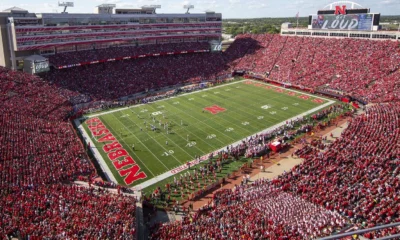

Featured
/ 2 days agoFan Guide to the Red-White Spring Game
Nebraska fans are set for a thrilling Saturday at Memorial Stadium for the annual...
-
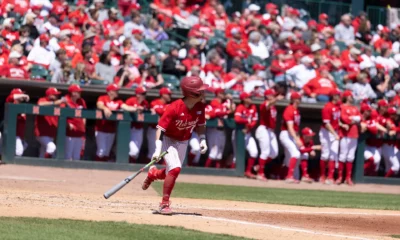

Baseball
/ 6 days agoHuskers Command Series Victory with a Resounding Win
In a spectacular show of force, Nebraska equaled its highest run tally of the...
-


Men's Gymnastics
/ 7 days agoHuskers Garner Five All-Americans at NCAA Gymnastics Finals
In Columbus, Ohio, the Nebraska men’s gymnastics team concluded their season with an impressive...
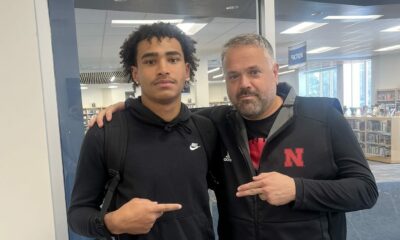

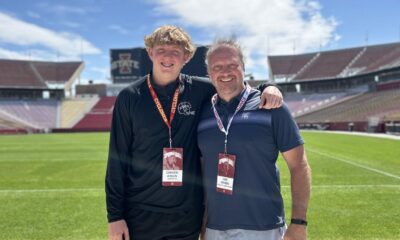

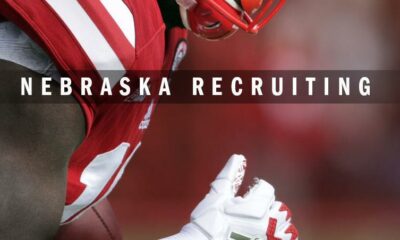

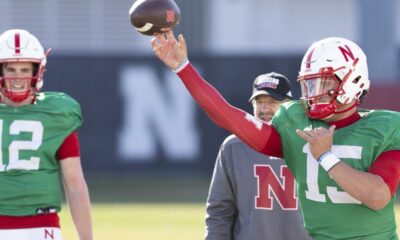









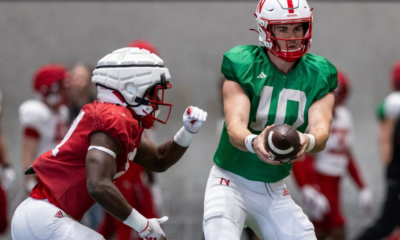





You must be logged in to post a comment Login